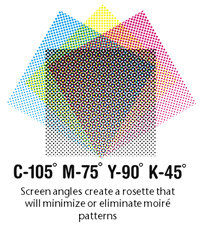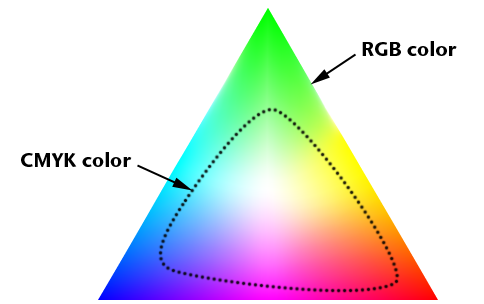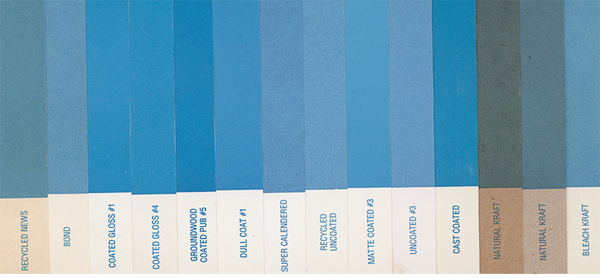Considerations when printing photographs and special ink colors
Viewing monitor colors as RGB

Photos print using dots
Printing colors made from CMYK

4-color process printing is commonly called CMYK. Images are created by combining the colors Cyan, Magenta, Yellow and Black.
Combination of CMYK dots and varying their sizes will create a secondary color.
Photograph printed as CMYK
CMYK Advantages
You can print about 6,000 colors.
Your computer monitor can be calibrated to match proofing systems.
Proofing systems can be calibrated to match printing presses.
Widespread understanding four-color process theory of color
The problem with CMYK is…
We see millions of color shades
Photographs record 12,000 to 14,000 colors
Proofing systems show 7,000 colors.
Printing on coated paper will reproduce only 6,000 colors

Pantone Matching System
Commonly known as PMS colors.
Made as a special color not dependent on CMYK.
A PMS number is an individual color identifiable anywhere in the world.
A PMS color requires a separate printing plate which uses one printing unit.
A one-color project printing a PMS color is less expensive than printing CMYK
Why not print everything in PMS?
Pantone Books
To communicate color effectively you should have at your desk the following:
Three-Guide Set printed on coated, uncoated, and matte papers.
Color bridge that compares PMS colors to the CMYK equivalent.
How do we see color?
8% of male population has some color perception deficiency.
As we age our ability to see blues and violets is hampered.
The light in the viewing area will change the color that we see.
How light effects what we see

Paper will change the color of ink

Ink Draw Down
Actual ink on running stock
All offset inks are transparent
The color of the paper will change the viewed color of ink
Varnish effects can be demonstrated on an ink drawn down
See also:
RGB vs. CMYK
Colors/Inks
Communicating with Color
Paper and Ink
Printing Resources
Request a quote or consultation
Purchase printing, upload your PDF or design online